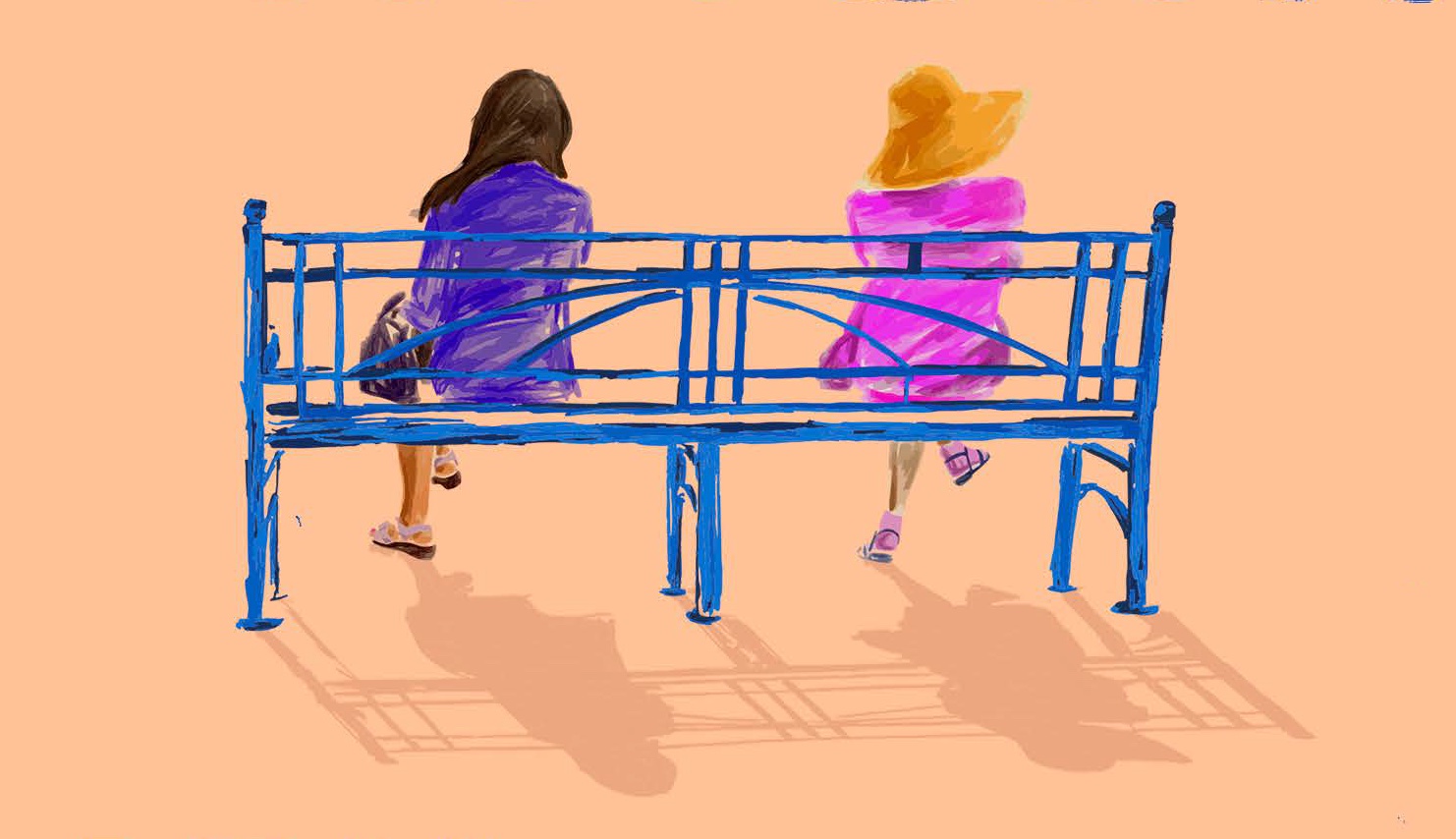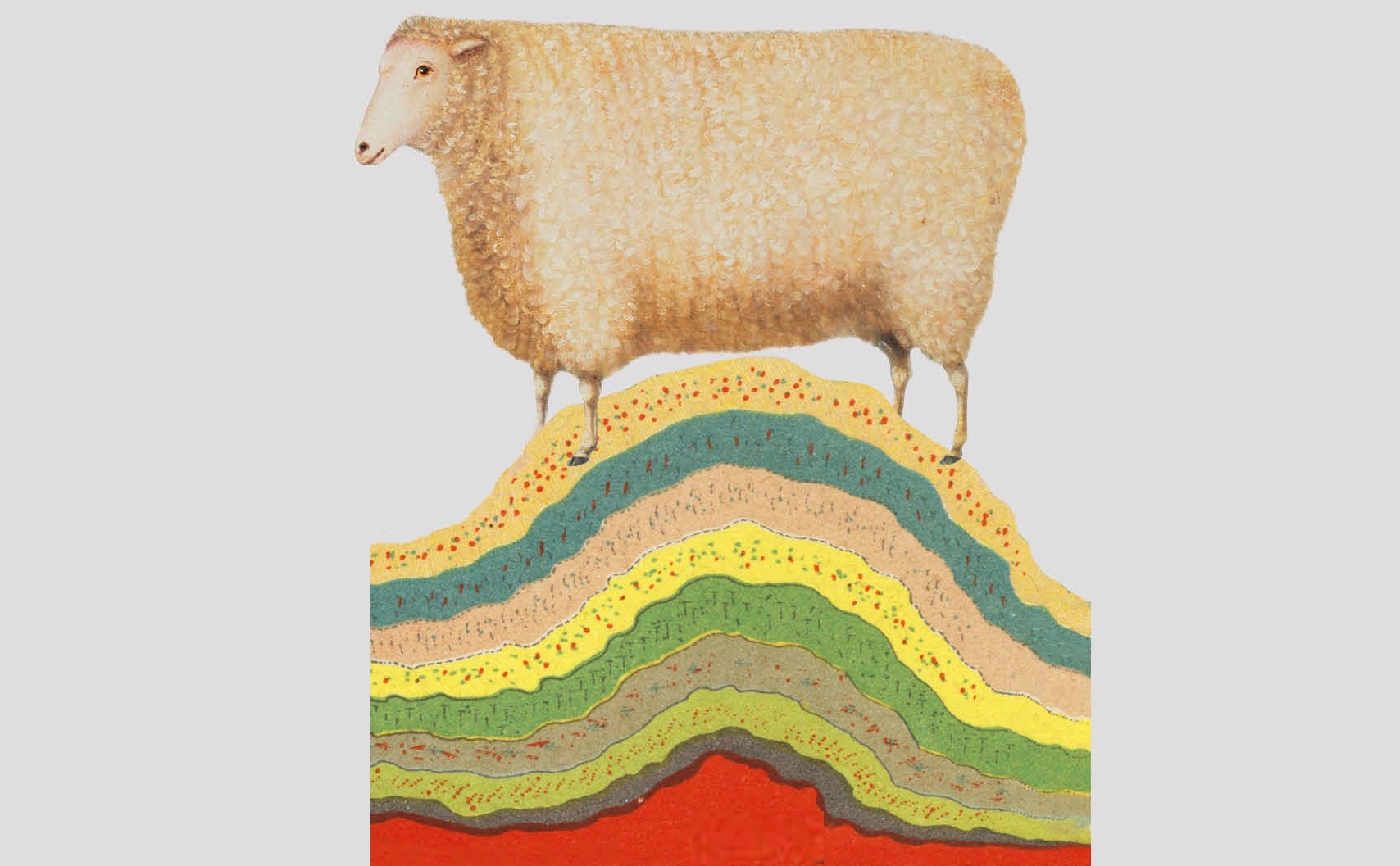interviews
Searching for Intimacy in the Gig Economy
Jenny Xie on mother-daughter dynamics and how her experience as a professional cuddler informed her novel "Holding Pattern"

Kathleen Cheng is having a hell of a Saturn Return. The late-20s protagonist of Jenny Xie’s debut novel Holding Pattern has just been dumped by the man she thought she’d spend her life with. Unmoored and questioning, she drops out of her cognitive psychology graduate program on the East Coast and moves back in with her mother in California’s East Bay.
Her mother, however, is not the mother Kathleen remembers. Marissa is no longer the heartbroken single parent, stranded by her husband’s infidelity and left to struggle with finances, depression, alcoholism, and making her way in an unfamiliar country, where comfort is always out of reach. The new Marissa is engaged to an ABC Silicon Valley tech entrepreneur and wholly embracing the contemporary brand of West Coast wellness: hiking, jogging, green juice, and the perfect Pinterest-board wedding.
No longer her mother’s caretaker but still her maid-of-honor, Kathleen navigates these unbreachable distances and unbearable closeness while trying to square the past with the present. Back in her rapidly changing hometown of Oakland, Kathleen reunites with old friends and explores different forms of intimacy: from a “techno circus” at a co-op in Berkeley to parasocial relationships with pet influencers on Instagram. She takes a gig with a start-up specializing in professional cuddling, which expands her understanding of intimacy in precarious and illuminating ways.
Holding Pattern introduces readers to a spectrum of contemporary characters (including a memorable tech bro opining the lack of UX design in the wilderness), but handles its satire with open-mindedness and a light touch.
“I wanted to write characters who were obviously flawed, but I wanted everyone to be on everyone’s side,” Xie says.
I spoke with Xie by phone about mother wounds, ethical intimacy, and accepting ephemerality. During our chat, Xie recalled her own late twenties, embroiled in a period of transition and upheaval, when she learned the term Saturn Return. “I was relieved to hear that it wasn’t just me,” she laughs. “It was cosmic!”
Katie Moulton: Can you talk about where this story began for you, and how it found its way to this final form?
Jenny Xie: Oh, such a long time ago. It felt like I could only see a couple of feet ahead of me for a long time. I wrote stories with the prototypes of Kathleen and Marissa, and I knew that the mother-daughter dynamic was at the core, so I tried to crack that relationship open.
I wanted these two characters to be each other’s whole world in a way. What happens when you love each other so intensely, but you’re in such close proximity and with such intensity, that every point of friction is amplified. And then it ossifies into a pattern, right? Who else are you in a relationship with longer than your mom? She’s the only person you’ve known your whole life. And you can fall into these canonical roles of mother and daughter and a pattern of speaking and listening that aren’t really speaking and listening.
On top of that, I wanted to give Kathleen and Marissa the weird experience of being totally cleaved into by immigration. Marissa made this choice to leave her entire country and bring up this girl, but that means she doesn’t have any of the same cultural touchpoints or the same values. You’re not even going to have the same music! There’s very little overlap, and then it’s exacerbated by an actual language barrier. So, the two of them are weaving in and out between English and Mandarin, trying to cobble together a common language. On the literal level of language itself, but also in terms of, what does it mean to be a person?
KM: The novel weaves stories from the family’s shared past with Kathleen’s return home, but the central narrative action focuses on the run-up to her mother’s wedding. How did you think about structure in this story?
JX: The wedding aspect was a way to structure how they confront each other. With a wedding, there are these certain beats—like, this many months, you should get the dresses—so it had a natural narrative frame. I could use those beats to think about how they come together and do these weird rituals, but in an upside-down way. Usually, it’s the mother helping the daughter get married, and in this iteration it’s the opposite. Which is fraught for Kathleen because she has always felt like a caretaker for her mom.
KM: There’s interesting tension created between the wedding as this big symbolic ritual and the mechanisms of event being rooted in contemporary, ephemeral culture. We’re dealing with life and death, but the steps—trying on a bridesmaid dress, assembling centerpieces, booking hotels—are consumerist and pretty banal.
JX: I’ve never planned a wedding, but the preparations are fascinating. Marissa is playing into this Silicon Valley-American-Pinterest wedding, which is sort of laughable because it’s so far from what she grew up with—and what Kathleen grew up with. The bachelorette party in Vegas also sprung out of that absurdity, with Marissa like, “I want to do this white person thing.” I think in this new version of her life, she feels like she is finally getting a foothold. She wants to make the wedding happen in a very consumerist sense to say, “I’ve made it. I’m going to achieve the thing that society and media tells me I’m supposed to have. I’m going to recreate the picture that has been told to me of the American Dream, and that will be my symbol of ‘making it.’” Whereas Kathleen grew up with a totally different mindset and is very skeptical of it.
KM: What research did you have to do to find your way through Kathleen’s story? I am specifically curious about the psychology around haptic technology and of course, the gig she takes with a professional cuddling start-up.
JX: The idea for the cuddling start-up sparked when I was looking for a summer job during my MFA [at Johns Hopkins University]. Someone had posted looking for professional cuddlers to work at a new physical clinic. I didn’t apply, but the concept stuck with me.
Kathleen is studying cognitive psychology and working with haptics, so is already thinking about and researching touch. But it’s in this very removed, clinical-trial way. When she drops out and is looking for her next move, she decides to engage with touch in a much more intimate way.
This led me to read a lot of scientific papers on the physiological benefits of touch. Dr. Tiffany Field runs the Touch Research Institute at the University of Miami, and she has been the leader in coining this idea of touch hunger and skin hunger, particularly in American culture. Her studies prove that touch is crucial to infant development, lowers your blood pressure, lowers your heart rate, lowers your cortisol levels, boost immunity. It’s helpful in staving off degenerative diseases. It’s just so good for you.
Touch is the first sense to develop in the womb, and skin is the largest organ. In different studies, they found that you kind of can’t touch too quickly, and you can’t touch too softly. Our bodies are built for tenderness, and we really need it. Yet there are all these social taboos about touch, only exacerbated by the pandemic, and we’ve been experiencing this epidemic of loneliness.
KM: What first-hand research did you conduct?
Our bodies built for tenderness.
JX: I started professionally cuddling myself about a year and a half ago with an online service. I learned a lot about setting very clear boundaries. Of course, sex and intimacy are so related, and there are all these power politics around who is paying for what service. My cuddling clients have always been sparse because, honestly, 99% of people who reach out can’t get through the screening process. But I have learned that when you screen people correctly and set the right boundaries, you can have this intensely intimate encounter with a stranger you met five seconds ago. You can have full body contact, and it can be incredibly intimate—but platonic. It’s very sweet to discover that.
I don’t know if Midas Touch [Xie’s fictional cuddling start-up] is the answer, but I wish there were a service for people to get there safely and ethically.
KM: In imagining this business, which sells the service of ethical touch, how did your thinking develop around care industries and the commodification of intimacy?
JX: Thinking about healthcare—is it ever ethical to commodify it? The way our system is set up, in every place of care, as elsewhere, you see the disparity between people who need care and people who actually get it. I see the need for touch falling into that same trap.
I think about therapy and how expensive each session is, and there are startups offering telehealth and options to make it more accessible. But these are Band-Aids to the actual problem.
KM: In the novel’s tracking of Kathleen’s attempts to communicate with Marissa, there is this sort of blazing distance between them that seems to be a symptom of an overwhelming closeness. Can you talk a bit more about how you view this relationship of care and the impulse to fix or correct each other?
JX: I do feel that the closer you get to someone, you see better how far they are from you. The more you know about someone, the more you realize there’s so much more. Which is normal. And no one ever knows themselves anyway.
There is so much “fixing” coded into the role of motherhood—to nurture, to guide, to teach, to mold. But daughters have a tendency to do that in turn for their mothers. In a way, you’re always thinking back to your mother. You’re always reacting to your mother because that’s your origin. You necessarily, inherently define yourself with or against that.
For Kathleen, she has a lot of resentment about being forced to be a kind of caretaker when she was young. [She longs for] acknowledgement for what she did and validation. She feels resentful of Brian [her mother’s fiancé] and Marissa for changing. Like, snap your fingers and she’s “healed”? But how did I not lift her out of her depression? Why didn’t I matter enough to make her want to be better? By the end she realizes that it wasn’t her responsibility, and it wasn’t within her power. Sometimes it’s just timing.
KM: For a story about an intense one-on-one relationship, Holding Patterns features some masterful scenes conducted within large crowds: a co-op rave, a pet influencer convention, the labyrinth of Vegas casinos. How do these crowd scenes and settings function in a novel focused on intimacy?
JX: In smaller scenes between fewer characters—Kathleen with her mother, or her best friend, or her cuddling client—I go more slowly, focused on smaller gestures.
The closer you get to someone, the more you realize how far they are.
[In a crowd scene] I’m thinking about how you can only point your attention in so many different directions at once. There are all these stimulants shooting at the character like arrows, so I wonder, What would hit her? In the rave scene, I was trying to capture this really joyful, almost monolithic aspect of being in a crowd. There’s that moment where you are so many bodies, but you kind of become one body and you trust everyone around you. I mean, this is like the best version of everybody. There are crowds that are not like this, but when you feel it, you become one animal.
KM: When reading Holding Pattern, I recalled Tony Tulathimutte’s novel Private Citizens, which also examined young people making their way in San Francisco—the other side of the Bay—during a very particular era. In your novel, an evolving, multi-faceted Oakland is, not necessarily a character, but the tumultuous current that all of these characters ride on. How did you approach capturing aspects of the place and culture, and what role do you think it plays in the book?
JX: Absolutely, I was writing about the East Bay the way that I had first seen it, when I moved to Berkeley around 2008 through 2012, 2013. In the novel, Kathleen goes back to where she grew up and is starting to see her neighborhood change. This book is situated on the cusp of the period when the Bay started going off the deep end [in terms of the prevalence of big tech, housing crises, etc.]
When I was living in Oakland, we were scared of all these DIY places shutting down. After the Ghost Ship fire, it really highlighted how people—artists and DIY folks—have been shoved into these tiny, unsafe corners. People have to make it work. I wanted to show the co-op where Kathleen’s best friend lives because even though it’s far from ideal, it is this community of people asking, How do we survive this together?
KM: All these changes and pressures—social, political, technological—are affecting the characters in different ways. Putting them together, drawing them apart, influencing their choices. Yet the external dynamics of the world don’t define the novel’s emotional hinge. How did you think about writing a world steeped in contemporary references that stays timeless?
JX: I’m not shying away from ephemerality. The first draft of this book didn’t include Instagram Stories because they didn’t exist yet. At a certain point, I realized I couldn’t keep up with the technology. A lot of people would shy away from including a brand name or pinning the story to a recognizable time and place, but that just feels disingenuous to me. I don’t need to make up Instagram, because writing about it gets outdated immediately anyway. It’s how I think about tattoos: I don’t really care if I don’t like them later. Because I liked it at the time. You just learn to accept the impulse.









